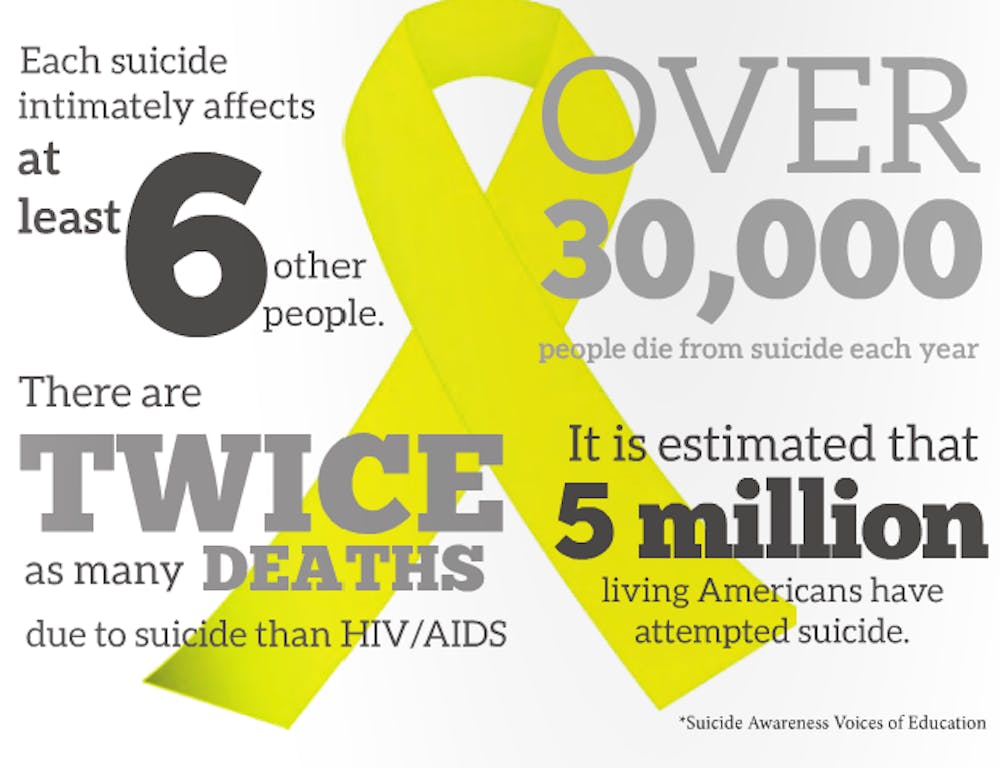Editorial: Understanding depression
Sometimes kind words can be the difference between life and death. Smiling can make someone’s entire day.
Suicide is a subject that should not be taken lightly. Learning about how to prevent suicide can truly save a life.
The Yellow Ribbon Suicide Prevention student organization at Central Michigan University has put together a week to raise awareness about suicide prevention on campus.
Since coming to college is often an extreme environmental change for some students, can be susceptible to developing mental illnesses. According to the National Institute of Mental Health, around 30 percent of college students feel “so depressed that it is difficult to function.”
When someone is feeling depressed and unable to live his or her life, it can be hard for that person to reach out for help. But we encourage them to do so.
It is not a sign of weakness.
Stigmas are made with mental illnesses, which makes it harder for an individual to seek the help they need. Stigmas about mental illnesses lead to humiliation and disgrace, or even worse, the loss of someone's life. No matter what the contributing factor to depression may be, depression is a chemical imbalance in the brain, and it is no one’s fault.
A person contemplating suicide will usually exhibit subtle or obvious signs. Talking about wanting to die or feeling hopeless, increased use of alcohol or drugs and withdrawing from things they once enjoyed are some of these signs.
They might also show extreme changes in mood, a sudden breakthrough of happiness or calmness or begin making arrangements and saying goodbyes. If you know what to look for, even the smallest hint, you can help.
Understanding the way depression and other mental illnesses work can be difficult, but crucial in order to take precautions.
Sometimes a person with a history of suicidal thoughts or clinical depression tends to have moments in their lives where they feel extremely happy and overjoyed, where everything in life is going just right. This can lead to a downhill spiral very quickly.
The World Health Organization estimates that approximately 1 million people die each year from suicide.
Human beings ultimately have a desire to live; a person who has depression doesn’t necessarily want to die, but they might feel that is their only option. A person who is suicidal is experiencing an unbearable suffering. Being a supporter of that person is pivotal.
External factors such as stressful life events or situations can be the "cause" or contributor to the onset of depression, but for some there may not be any external factors contributing to the onset. While this can be stressful to the person trying to help someone who is feeling hopeless, the best thing to do is be there for the person who is depressed.
When looking into the environment of a person who has depression, people trying to help look for something that needs to be "fixed" when in reality it was never broken. Getting an accurate diagnosis and effective treatment can make the quality of a person’s life greatly improve.
The more awareness to suicide prevention, the less people die from suicide. The world is tough and life can be exhausting, but every single person deserves to be alive to experience it.




